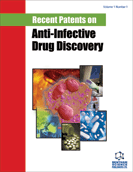Abstract
Recombinant fusion proteins consisting of the extracellular domain of immunoregulatory proteins and the constant (Fc) domain of immunoglobulin (Ig) represent a growing class of human therapeutics. Immunoadhesins combine the binding region of a protein sequence, with a desired specificity, with the effector domain of an antibody. Immunoadhesins have two important properties that are significant to their potential as therapeutic agents: the target specificity, and the pharmacokinetic stability (half-life in vivo that is comparable to that of antibodies). Immunoadhesins can be used as antagonist to inhibit or block deleterious interactions or as agonist to mimic or enhance physiological responses. Here, we review the recent advances in the development of immunoadhesins as tools for immune therapy, particularly for the treatment of infectious diseases. The present article is a short review for the recent patents related to immunoadhesins for immune therapy.
Keywords: Immunoadhesin, Fc-fusion protein, Fc-quimera, immunoregulatory, anti-infective agents, immune therapy
 3
3





















